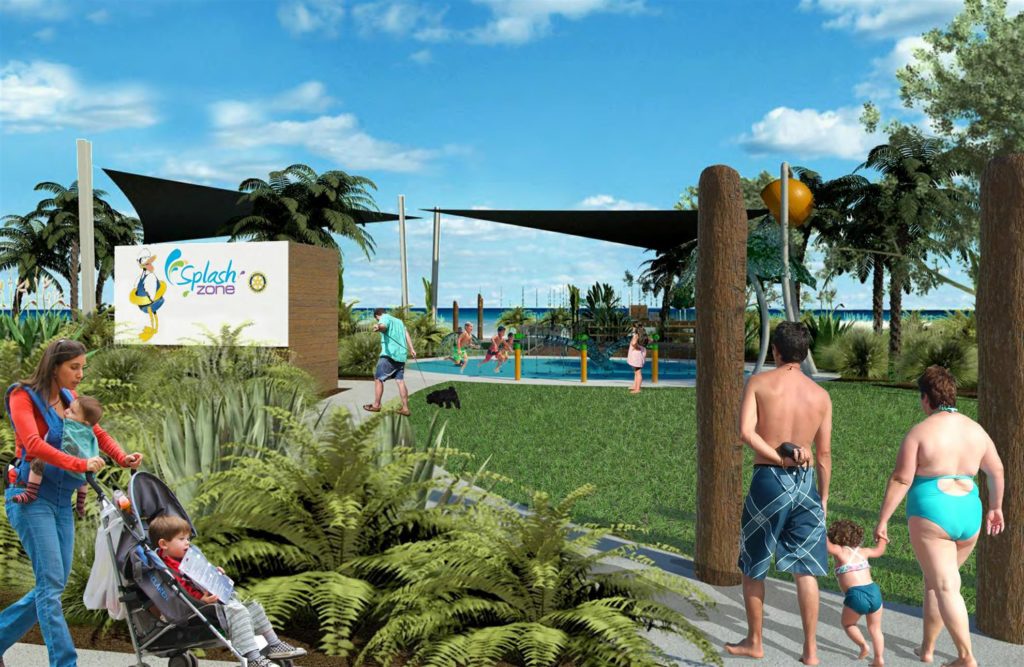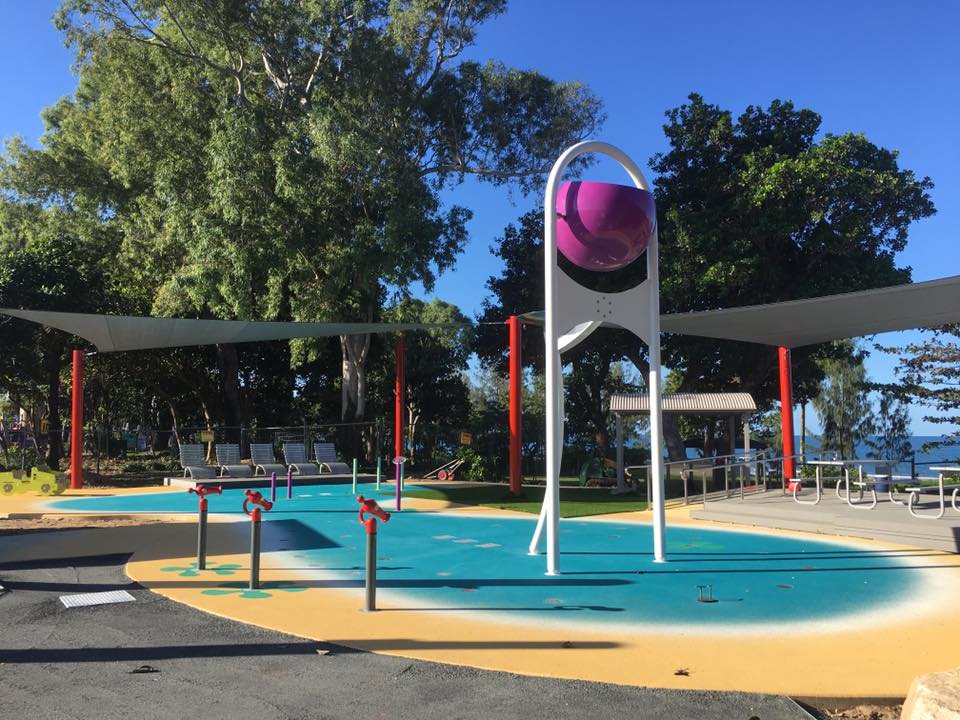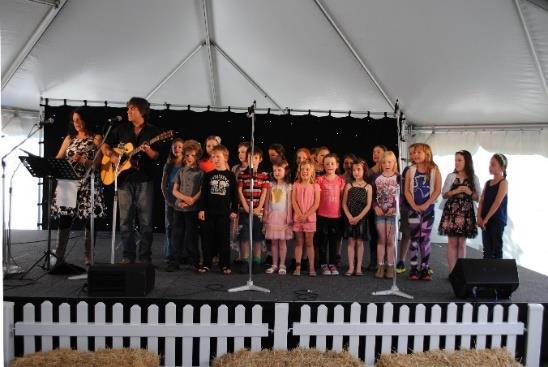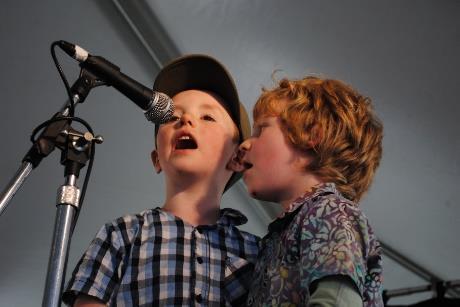Foundation for Rural & Regional Renewal (FRRR)
It’s not often that a toilet block is a tourism drawcard for a community, but that’s just what this project has achieved.
The Snowtown Centenary Park Inc oversees the grounds at North Terrace, Snowtown, 145 km north of Adelaide in SA. They’ve been on a mission to improve the facilities and, over the past 10 years, have extended the football change rooms, built a skate park and recently renovated the interior of the toilet block.
The outside of the toilet block however, still left a lot to be desired – a dull and dirty bessa block structure, with no visual appeal. It was truly a ‘blank canvas’.
An SRC grant for $10,000, funded by a private donor, enabled the Park Committee to engage a professional artist to paint a mural on all four walls, to brighten the centrally located facilities.
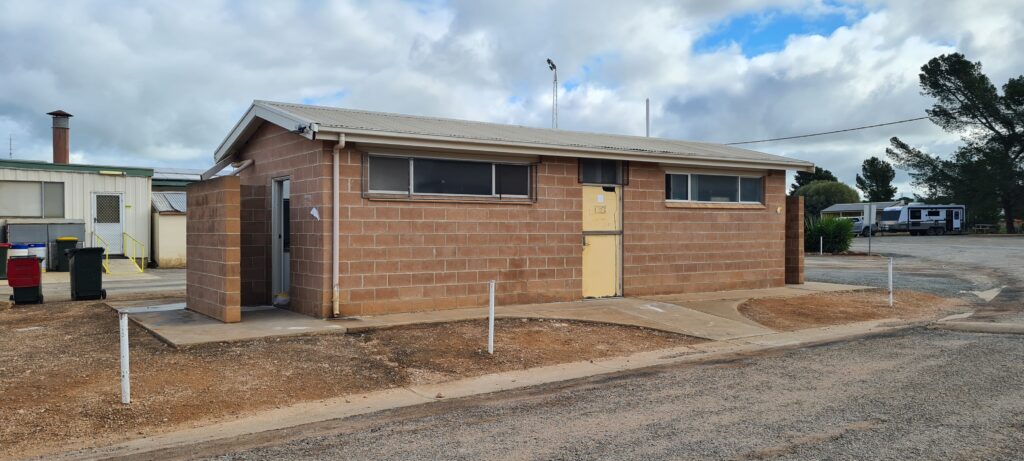
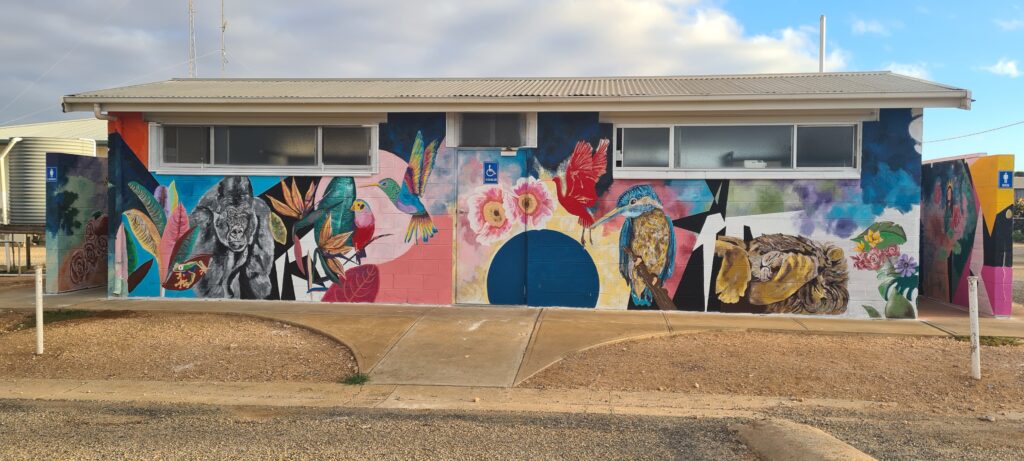
The mural has transformed the dull façade of the Centenary Park amenities block with vibrant images of bird and animal life. It is now regularly admired by locals and visitors to Centenary Park. With animals and objects of every letter of the alphabet to find and discover, it’s great for people of all ages, from young children looking for animals, teenagers posing for photos and adults enjoying the beautiful artwork. This mural is bright and colourful and a wonderful sight for tourists calling in off the highway and visitors to the region.

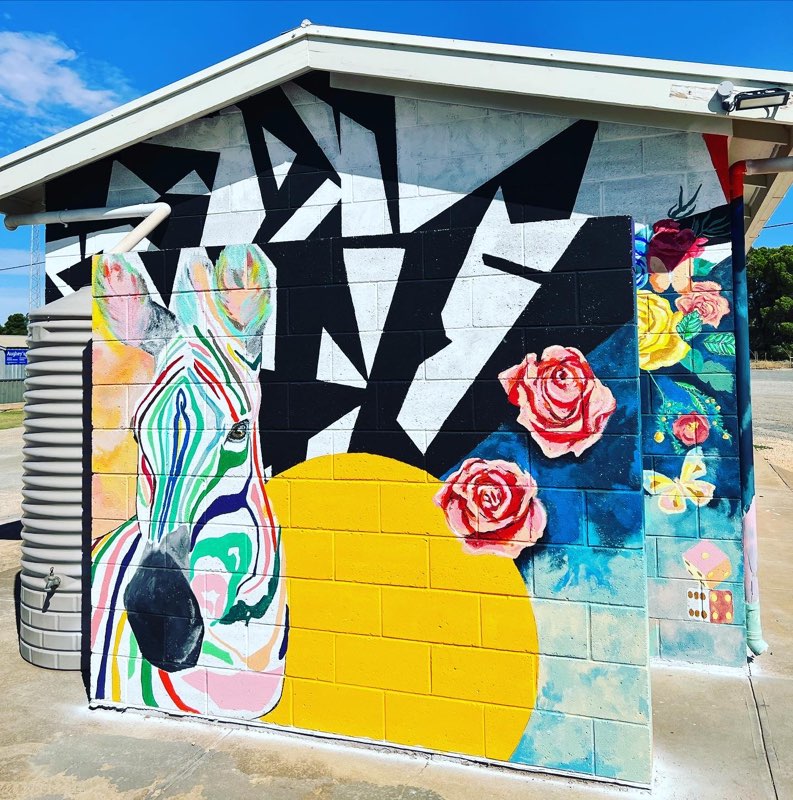
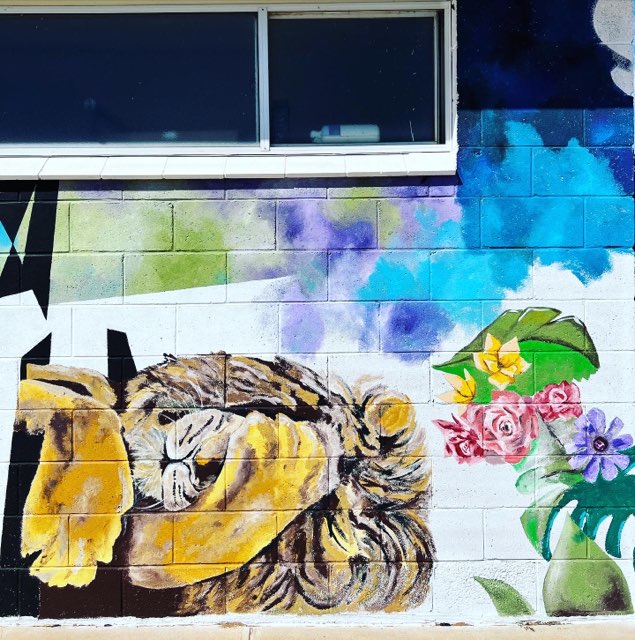
“So many people have stopped to admire the artwork and we have had an increase in caravan visitors to the park … the mural has had a positive impact on the image of the whole town. The toilet block looks amazing. Before it was dull and boring, now it is bright, vibrant and interesting.”
Project Manager and Committee member Bernie Altmann.
A grant originally intended to help the Gong-Dal Aboriginal Corporation increase opportunities for the Gapuwiyak community in East Arnhem Land was partially diverted to help the community respond to COVID.
The FRRR Westpac Rural Communities Grant of $10,000 was originally intended for tourism business education and mentoring programs in the Northern Territory, to support the organisation in its capacity and capability as it embarked on a niche tourism venture. However, as 2020 unfolded, the organisation recognised that there was a more urgent need to support the community in managing and responding to the emergency that COVID had created.
General Manager Juli Cathcart said that half the grant was used to employ experienced facilitators to run workshops, develop resources and support community engagement with the Gapuwiyak and Homelands COVID-19 Dhäwu Ganamirr Mala (COVID-19 Both-Ways Community Engagement Group).
The second half was directed toward the original purpose and used for facilitating workshops, recording and documenting the Miriŋu Dhukarr – Warriors’ Walk – cultural tourism project.
The COVID-19 response group was formed by Yolŋu leaders to provide intercultural advice to government agencies and other stakeholders and ensure culturally safe and appropriate community engagement.
The facilitation included education and training for 15 local Yolŋu people about COVID and a Local Pandemic Action Plan and Outbreak Management Plan. It included key materials in plain English and Djambarrpuyŋu, the local Indigenous language, as well as ‘just-in-time’ advice and support for the local police, clinic and other stakeholders.
This work empowered 900 local Yolŋu community residents in Gapuwiyak and Homelands by giving them knowledge and understanding they needed to keep their families informed of COVID and the NT government responses.
“This ensured a highly responsive and culturally safe COVID Local Pandemic Action Plan, and directly contributed to the development of respectful and trusting relationships between local Yolŋu leaders and community members, and our stakeholder organisations and employees in relation to the local management of COVID and safety of Gapuwiyak and our Homeland communities,” Juli Cathcart said.
“Feedback received was that as a result of this work, local Yolŋu community members felt respected, well informed, heard, assured, secure and safe in a time of great uncertainty, which improved everyone’s quality of life. This work was also key in the development of trusting relationships between stakeholders and Yolŋu community members. The very high uptake of vaccinations in Gapuwiyak and Homelands (80% of eligible community members) compared to other Aboriginal communities and the rest of Australia in 2021 can also largely be attributed to this work. This is a potentially life-saving outcome in a community where chronic disease placed at least 60% of our population in extreme danger if they should contract the coronavirus.”
The second part of the funding supported the development of a museum and a Yolŋu cultural tourism initiative comprising a series of heritage trails across Arnhemland. They follow the foot patrols of the Miriŋu (Yolŋu warriors) who formed the first Northern Reconnaissance Unit with Dr Donald Thompson and defended the Northern coastline during WWII. A high-quality documentary about the Miriŋu Dhukarr Project will also to attract funding to enable the development of this Yolŋu cultural heritage trail and tourism initiative that is of huge local cultural and historical importance as well as of National historical significance.
It is also funding ongoing workshops to enable Yolŋu Elders and Leaders to work with both Yolŋu and Balanda soldiers and veterans, as well as young Yolŋu people to ensure the intergenerational transfer of important and endangered Miriŋu cultural traditions, stories, knowledge and skills.
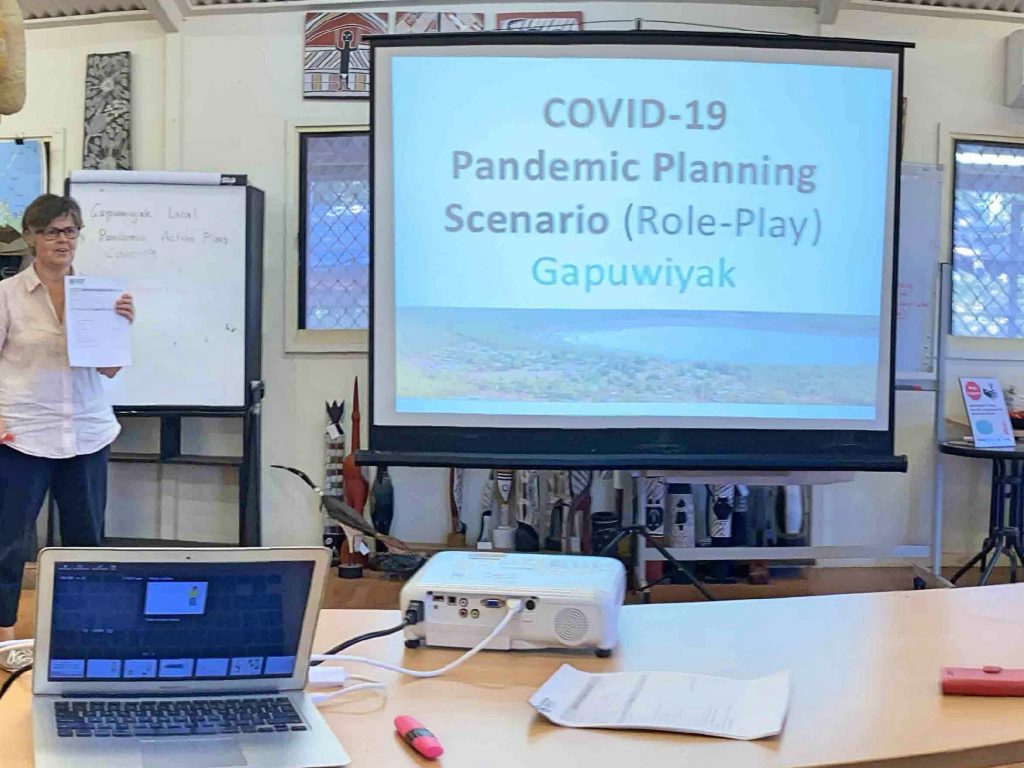
The need for the diversification of industry has been well known to the Northampton community for many years, given the heavy reliance on agriculture. Drought and unpredictable seasons have seen the withdrawal of many farming families, leaving an ageing population. Northampton has a median age of residents that is significantly older than the national average.
To address this issue, several community groups worked toward a common goal – to leverage the significant tourism potential of the town and bring in more visitors and diversify income. Northampton has a rich heritage, being one of only three towns in Western Australia to have attained the ‘Historic Town’ status. The development of an arts trail is a key feature of the plan, and the Northampton Friends of the Railway sought to add to it with the development and installation of a large 5m x 10m public sculpture.
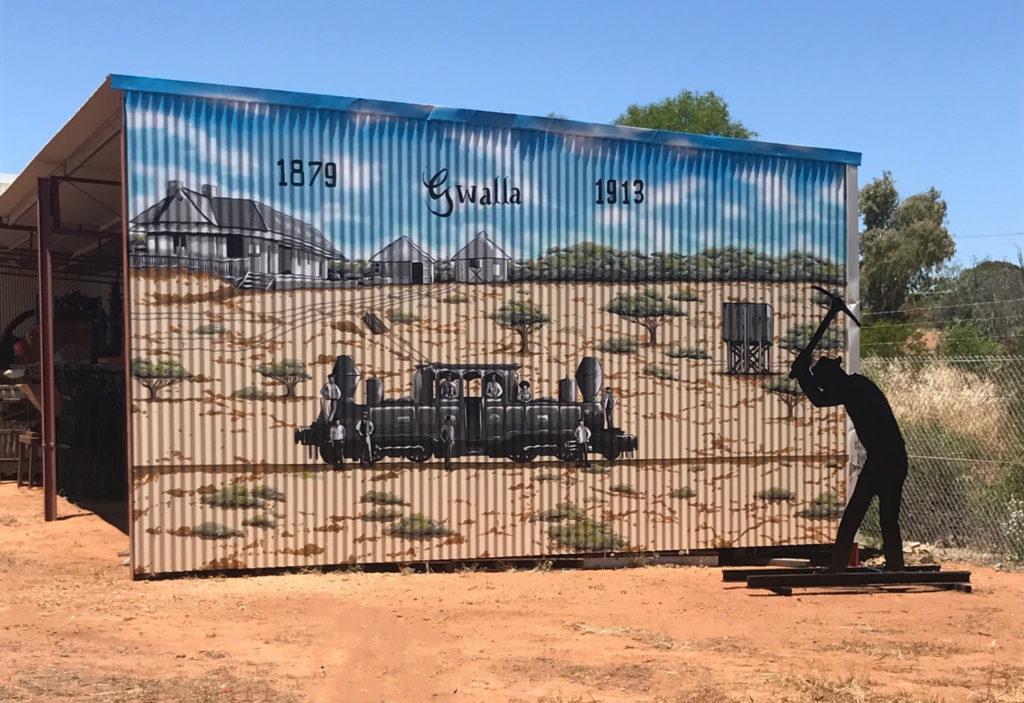
They worked with local artists and steel masons to design and construct the steal art sculpture with the $3,500 Strengthening Rural Communities grant, thanks to funding from the Bertalli Family Foundation, which was specifically used for its final design and painting. The piece depicts the historic Gwalla railway precinct with all of the original buildings of the railway station, some of which no longer exist, and is located exactly on a section of the first Government Railway in Western Australia. It’s an important interpretive piece to showcase the former area, given the significant role that the railway played in the township’s mining and agricultural history.
This project brought together economic, heritage and artistic outcomes, celebrating and promoting a unique local history.
Located 1,000 km from Brisbane in the southwest of Queensland, Eromanga has a big claim to fame. The rural town, hidden deep in the outback of Australia, may only be 119 residents – but the biggest by far is Cooper, a 30 metre long and 6.5 metre high Dinosaur.
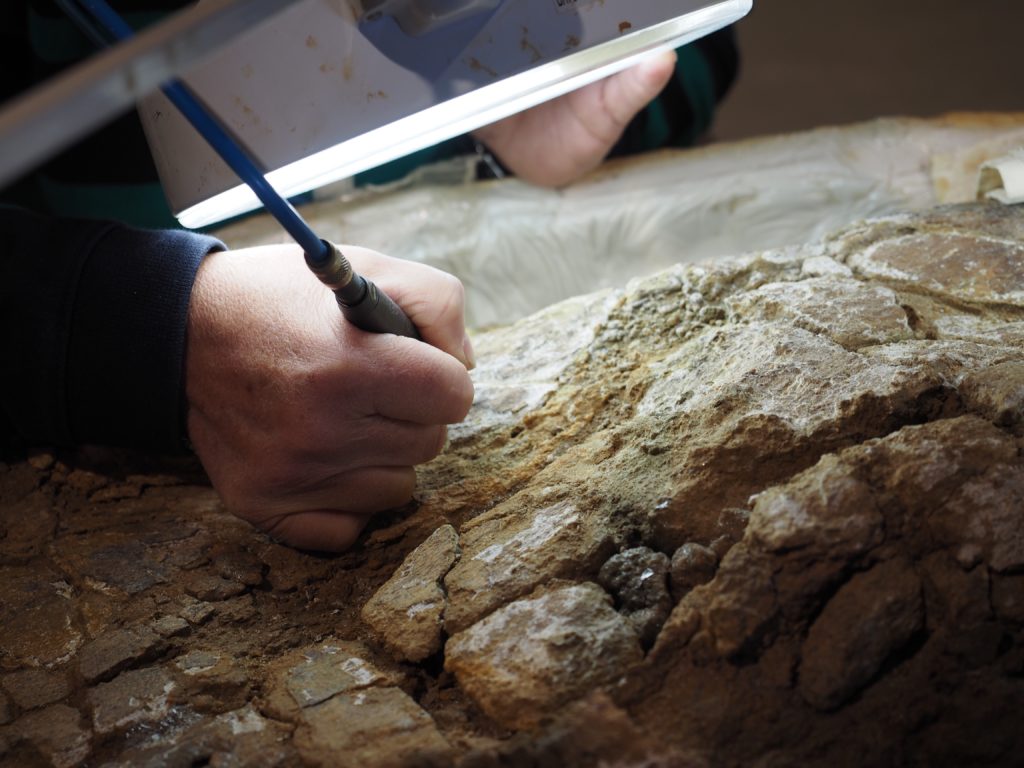
Eromanga is Australia’s furthest town from the ocean, and was drought declared for 13 years out of the 18 years to 2018. The many challenges brought on by a long drought, paired with the limited access to the town, have made increasing tourism a top priority for the local community.
Until recently, tourism around the region was almost non-existent, until the first dinosaur genus was found in 2004. From then, the Outback Gondwana Foundation founded the Eromanga Natural History Museum (ENHM), and since 2008 has been collecting and processing the fossils found in the area for locals, scientists and tourists to view.

The museum features fossils that have been preserved for more than 95 million years, however being located in a remote area has meant little foot traffic. Visitors faced long travel times to and from the museum, making day trips nearly impossible.
To overcome this obstacle, the Museum opened their own on-site accommodation, bringing more business to the area by allowing visitors to stay longer. Cooper’s Country Lodge offers four-star rooms, and thanks to a recent grant from FRRR, now has new kitchen and laundry facilities for their guests to enjoy.
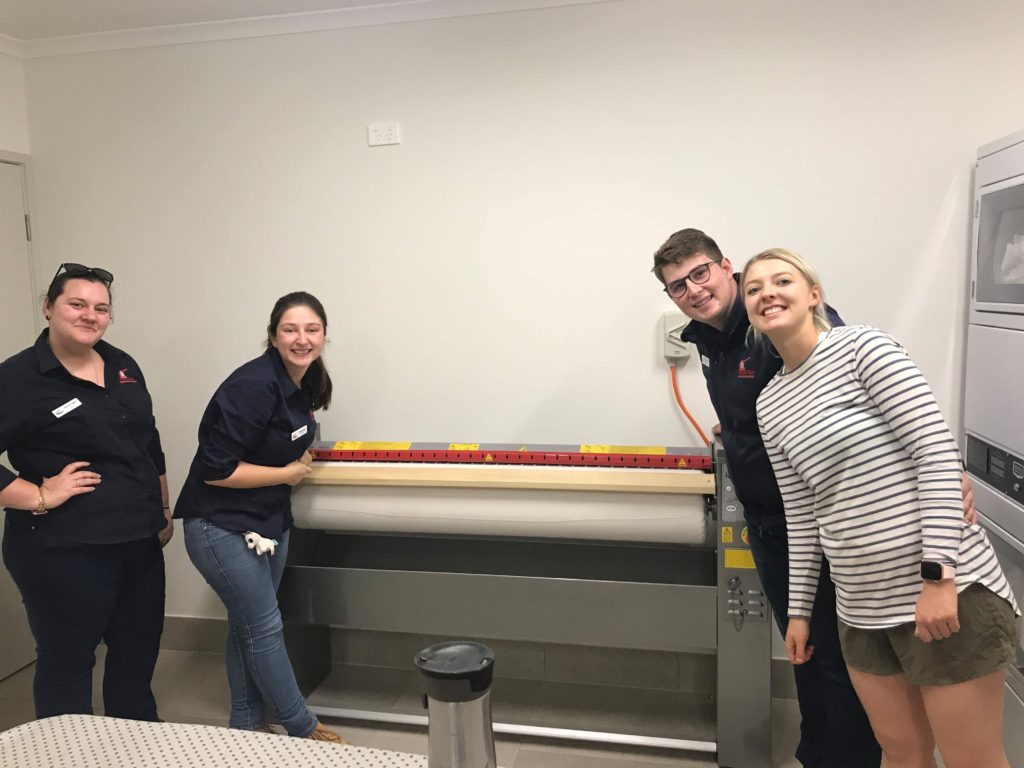
The team at ENHM received a $20,000 grant through FRRR’s Tackling Tough Times Together program, funded by Australia Post, which allowed them to purchase equipment and fit out their onsite kitchen, laundry and support services. There is also a commercial kitchen featuring a microwave, griddle, deep fryer and new cookware, together with dining furniture and outdoor table & chairs.

The investment is already paying off. Despite the lockdowns and travel restrictions throughout the COVID-19 pandemic, the popularity of the ENHM and Cooper’s Country Lodge has only increased, as Queenslanders have spent their holidays travelling in their own backyard. In 2020, the ENHM received the TripAdvisor Travellers Choice Award, meaning the Museum is in the top 10% of attractions worldwide.
For the residents of Mission Beach in Queensland, there was a lack of safe water play facilities in the area, due to no community swimming pool and the presence of deadly marine stinging jellyfish in the local beach during the summer months.
The Rotary Water Park/Splash Pad project was developed to provide a special place for the children of Mission Beach to play with their families and friends. It would also offer an opportunity for visitors to experience the Water Park/Spray Pad facilities at the Mission Beach beachfront, bringing much-needed tourism to the area.
The project also was also a part of the Cyclone Yasi recovery initiative for Mission Beach. Yasi caused major destruction in the community in 2011. The Rotary Club of Mission Beach opened a Fundraising Account with FRRR in 2014 to enable keen sponsors to receive a tax deduction for any donations.
In December 2018, the Club reached their fundraising target and began construction early the following year. A project five years in the making has become a reality and been a huge success for the Mission beach community. You will now find the Water Park filled with families, with children enjoying the new water-play facilities.
One of the project managers who helped deliver the water park advises other community groups to “never give up”, as persistence was integral to their success.
The Mission Beach community await to see the impact of the Water Park on local tourism for the Summer holiday season but expect to see the same great outcome it has had for locals.
In the many years it takes to rebuild a region following a disaster like the 2009 Victorian bushfires, success in driving tourism back to the area can be make or break. It takes a concerted effort from a cohesive community to start seeing positive growth again.
In the Kinglake Ranges, the Foggy Mountain Bluegrass Festival, held for the second time in 2015, achieved both of these important factors of recovery – driving community engagement while supporting wider economic development in a unique and exciting way.
The three day festival held last October (16th – 18th) attracted 1,500 attendees, 70% of which were visitors to the region. It included a Bush dance, music workshops, Bluegrass concerts, local produce, local talent, street performers, community concerts and a beard competition to support the Charity White Ribbon to raise awareness and funds to help stop violence again women. It brought local musicians back out in the open and connected a huge range of groups in the area, from the Kinglake CFA and Police to the Mountain Pickers Association of Victoria and the Australian Bluegrass and Old Timey Music Association. Many local food and accommodation businesses were booked out or sold out of products.
President of Foggy Mountain Inc, Brad Quilliam, said, “Overall we were extremely buoyed by the positive feedback from all involved and the festival achieving so many of its goals. The micro businesses in our area had rave reviews from all visitors which enhanced their confidence.”
Funding support came from a variety of sources – from the Rotary Club of Kinglake Ranges, CERT, CFA, SES, Kinglake Neighbourhood House, Kinglake Foundation, and Kinglake Lions, with in-kind support from local organisations and businesses, and an estimated $6000 of volunteer labour – vital to the festival’s smooth operation.
Children given a voice through song
Foggy Mountain Inc applied to FRRR’s Grants for Resilience and Wellness program (GR&W) in order to run a special part of the music festival program – the song-writing program for local primary schools, which would culminate in 100 students performing their songs at the Sunday Community Concert at the Foggy Mountain Bluegrass Festival (with free entry all day to ensure the whole community could participate.)
GR&W granted $4,850, funded by the Victorian Bushfire Appeal Fund, to support workshops for six primary schools in the region (Kinglake East, Kinglake West, Middle Kinglake, Strathewan, Toolangi and Flowerdale Primary School) as well as a sound engineer to record the children’s songs and stage for their performance, as well as chairs and an MC for the Community Concert. The workshops gave their students the opportunity to learn song writing skills and were facilitated by the acclaimed Carter and Carter.
“The workshops give the children a voice through song and in 2014 the children wrote about what they had lost and now what they have gained” Mr Quilliam reported.
Mr Quilliam said the students were the highlight of the day!
“It was a perfect platform to encourage participation, give self-confidence and show the work that the students had done in the song writing workshops leading up to the festival. The children were so excited to be performing to a capacity crowd in the main marquee.”
The community day also included workshops to learn new musical skills, benefitting up and coming musicians of all ages, and a Gospel Concert. Organisers are already talking about running a program for youth in production and video to expand on the value the festival can give to the area’s young people.
“This part of the program gives the locals a sense of pride and optimism,” Mr Quilliam said.

